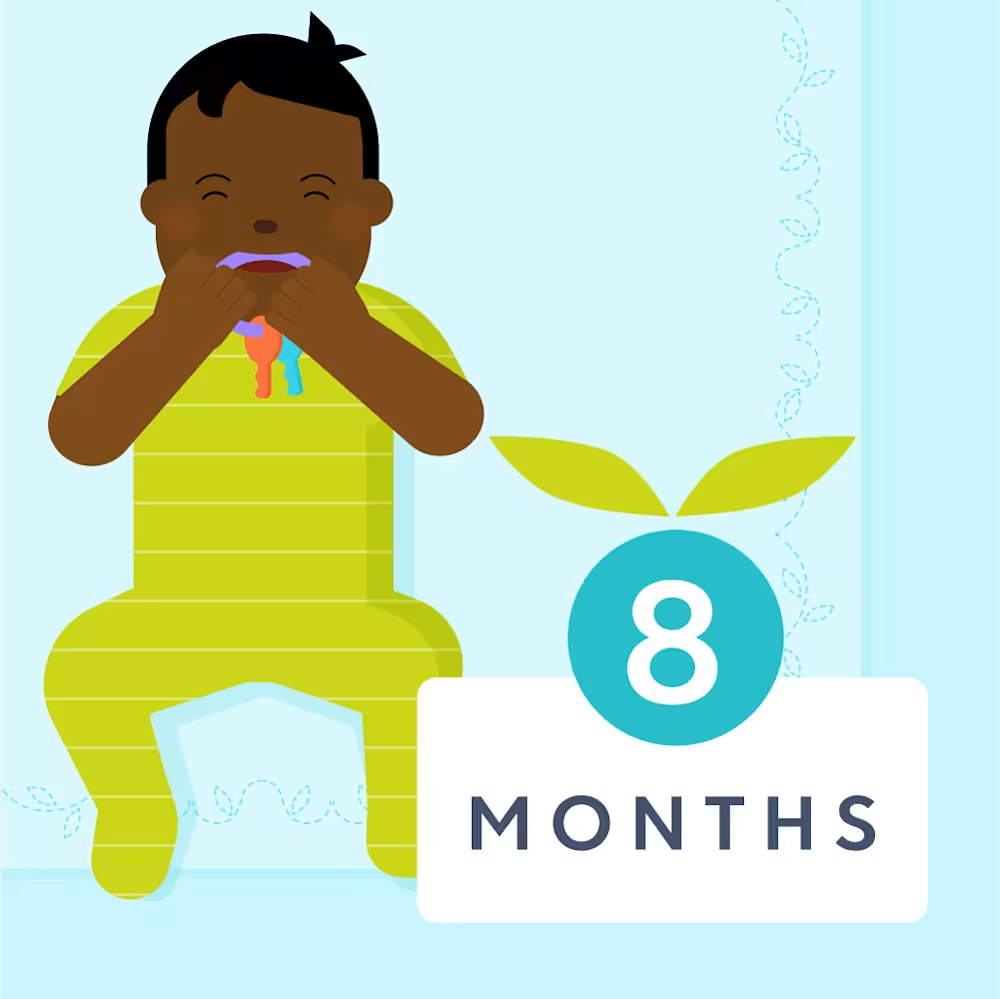How to manage the transition from four naps to three naps
Updated Dec 02, 2025

The first few months of a baby’s life can feel surprisingly chaotic for many parents. Naps are often short and unpredictable; bedtime can be all over the place.
The good news is that this period of irregularity is typically short-lived. By the time your baby transitions to three daily naps, your days should start to regulate into far more predictable patterns.
When do babies drop the 4th nap?
Most babies are ready for a 3-nap schedule around 4 - 6 months of age. As with all nap transition ages, there are some babies that will drop the nap earlier and some that will drop it later (you may ask yourself ?). When babies are 3 months it’s common to see 4 - 5 naps a day, and then move to a consistent 3-nap schedule at 4 months, rather than a standard transition from 4 naps to 3 naps.
In order to sleep well on a 3-nap schedule, babies will need to be able to consistently link sleep cycles during the day. This means they’ll sleep longer than an hour for most of the naps, which is needed on a 3-nap schedule. They’ll also need to comfortably stay awake for 1.75 - 2.5 hours in between naps.
Which nap gets dropped?
Typically a baby's last nap of the day gets dropped. As babies get older, they’ll be able to stay awake longer in between naps. As a result, the last nap typically merges with night sleep, resulting in fewer naps and an earlier bedtime.
For example, a 4-nap schedule for a might look like this, with just 1.5 hours of awake time before the first nap:
| Morning rise | 6:30 AM |
| 1st nap | 8:00 AM - 9:15 AM (1.25 hours) / 1.5 hours of awake time before 1st nap |
| 2nd nap | 11:00 AM - 12:00 PM (1 hour) / 1.75 hours of awake time before 2nd nap |
| 3rd nap | 1:45 PM - 2:45 PM (1 hour) / 1.75 hours of awake time before 3rd nap |
| 4th nap | 4:45 PM - 5:15 PM (30 minutes) / 2 hours of awake time before 4th nap |
| Get ready for bed | 6:45 PM |
| Asleep | 7:15 PM / 2 hours of awake time before bed |
Note: Sleep needs vary by child, and this chart should be viewed as an example.
As the wake windows and naps lengthen, a 3-nap schedule for a might look like this, with 2 hours of awake time before the first nap:
| Morning rise | 7:00 AM |
| 1st nap | 9:00 AM - 10:30 AM (1.5 hours) / 2 hours of awake time before 1st nap |
| 2nd nap | 12:45 PM - 2:15 PM (1.5 hours) / 2.25 hours of awake time before 2nd nap |
| 3rd nap | 4:30 PM - 5:15 PM (45 minutes) / 2.25 hours of awake time before 3rd nap |
| Get ready for bed | 7:00 PM |
| Asleep | 7:45 PM / 2.5 hours of awake time before bed |
Note: Sleep needs vary by child, and this chart should be viewed as an example.
Signs that your baby is ready to transition to 3 naps
There are some telltale signs that may indicate your little one is ready to start taking 3 naps. These include:
Shorter wake windows are no longer working
The 4th nap is merging with night sleep
They’re taking 4 short naps at 6 months old
We'll explain more below:
Shorter wake windows are no longer working
Babies who take 4 naps per day typically need wake windows that are 1.25 - 2 hours long. If your baby is starting to struggle to fall asleep after being awake for 2 hours, that’s a sign that longer wake windows (2 - 2.5 hours long) and fewer naps are needed.
The 4th nap is merging with night sleep
As your baby finds it easier to stay awake for longer periods of time, you will see naps shift later in the day. You might find that it makes more sense to offer an earlier bedtime than a 4th nap so late in the evening.
They’re taking 4 short naps at 6 months old
By 6 months of age, the circadian rhythm is fully developed and most babies are developmentally ready to lengthen their naps with the right schedule. Ideally, they’ll be taking 2 naps per day that are at least an hour long.
If your baby is at least 6 months old and is still regularly taking 4 short naps per day, a 4-nap schedule can reinforce this pattern of short naps. While this schedule may work well for some families, many babies will become overtired with shortened night sleep and early waking.

Tips to manage this transition
1. Don’t be afraid to alternate between 3-nap and 4-nap days
As with most nap transitions, expect a period of adjustment. Your baby may do well for several days on a 3-nap schedule but then need a “reset” day of 4 naps when they start showing signs of overtiredness. If your baby is extra fussy or has increased waking at night, offer 4 naps to see if it helps curb the overtiredness.
2. Use a longer bedtime routine to set it apart from nap time
As you alternate between 3- and 4-nap days, you may find that your baby treats bedtime as a 4th nap on some nights. Cue that it’s time for a longer slumber with a consistent bedtime routine!
Bedtime routines are typically longer than pre-nap routines. Add some extra stories or lullabies to help signal to your baby that it’s nighttime. Be sure to keep lights off and encourage your child to go back to sleep if they wake after 30 - 45 minutes.
3. Stretch out wake windows in 15-minute increments
If your baby is still regularly taking short naps at 6 months old, you may need to nudge the nap transition along. While we still expect some short naps at this age in the evening, we’re talking about a scenario where all naps are under an hour.
Consider stretching the wake windows out a bit, starting with 15-minute increments. This will help increase sleep pressure and can help ensure your baby is tired enough to take longer naps. It’s a small adjustment that may make a big impact.
4. Stick with 1.75 - 2.5 hours of awake time
At this age we still want to plan naps according to wake windows rather than the times on the clock. Aim for wake windows of 1.75 - 2.5 hours long to maximize sleep pressure and minimize overtiredness.
5. Aim for 10 - 12 hours of sleep per night with the 3-nap schedule
In order to make sure your baby is well rested, it can be helpful to target an optimal amount of night sleep, which is typically 10 - 12 hours per night for babies that are 3 - 6 months old.
If your baby is in their sleep space for longer than 12 hours on most nights, with long periods of wakefulness, this can be an indication that their current nap schedule is not a good fit. Likewise, if your baby is sleeping less than 10 hours in total at night, a schedule adjustment may help.
4 to 3 nap transition FAQ
Share article:
Note: The content on this site is for informational purposes only and should not replace medical advice from your doctor, pediatrician, or medical professional. If you have questions or concerns, you should contact a medical professional.






